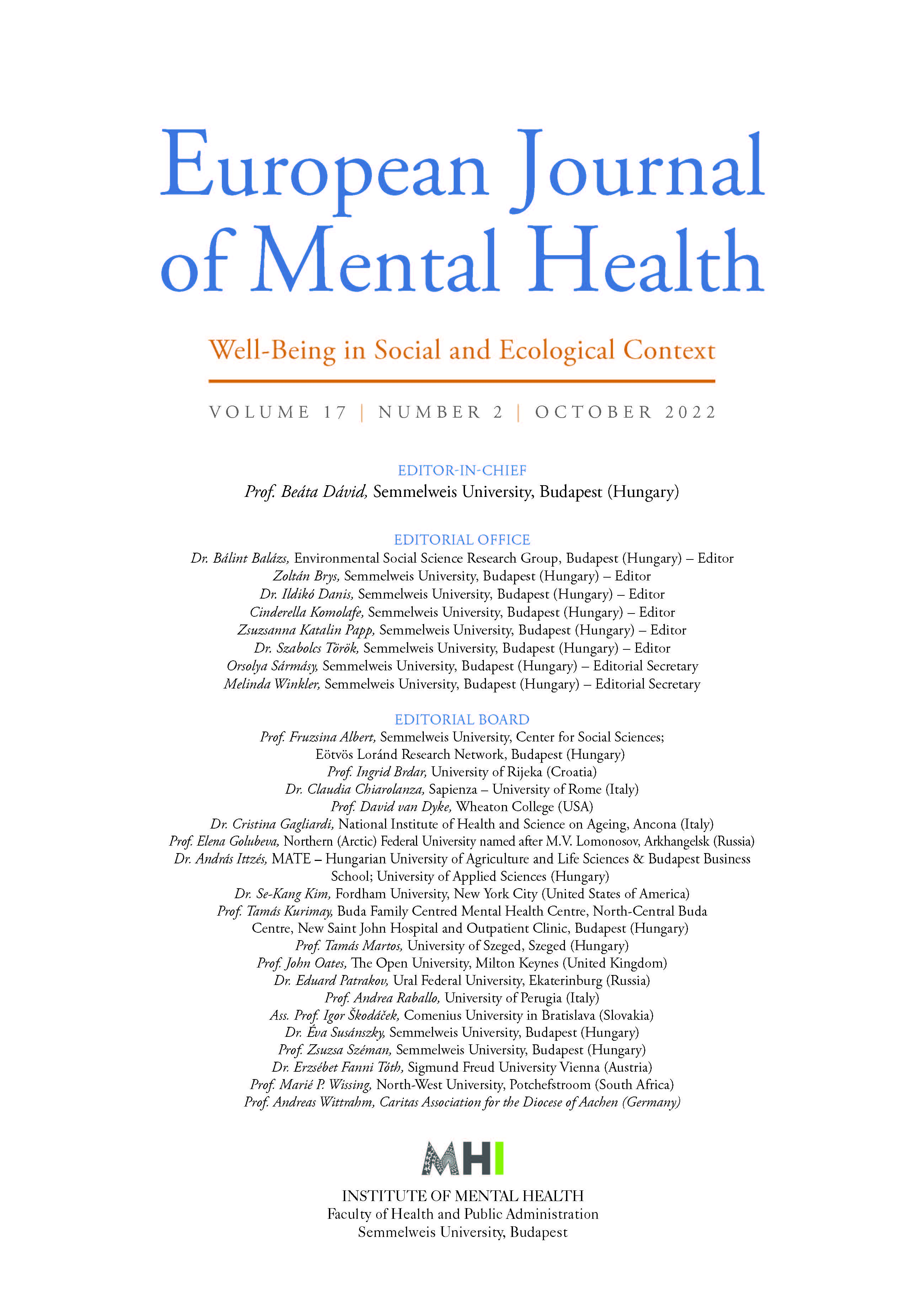The Multifactorial Background of Helping Professionals’ Vital Exhaustion and Subjective Well-Being During the First Wave of COVID-19 in Hungary: A Cross-Sectional Study
The Multifactorial Background of Helping Professionals’ Vital Exhaustion and Subjective Well-Being During the First Wave of COVID-19 in Hungary: A Cross-Sectional Study
Author(s): Attila Pilinszki, Bernadett Asztalos, Ildikó Danis, Máté Joób, Tímea Tésenyi, Gábor Pál TörökSubject(s): Psychology
Published by: Semmelweis Egyetem Mentálhigiéné Intézet
Keywords: vital exhaustion; well-being; health care workers; social workers; helping professionals
Summary/Abstract: Introduction: Vital exhaustion and the well-being of helping professionals are important issues regarding the sustainability of services, especially in a critical situation such as the COVID-19 pandemic. Aims: The purpose of this study was to investigate helping professionals’ vital exhaustion and well-being, concerning different groups of background variables during the COVID-19 pandemic. Methods: In the spring of 2020, Hungarian helping professionals (N = 931) were contacted with an online questionnaire. Results: Our results show that indicators of physical well-being are strongly associated with vital exhaustion and subjective well-being (sleeping quality (χ2 (2) = 251.062, p < .001); frequency of meals (χ2 (2) = 99.454, p < .001)). Health and social care workers were more exhausted than members of other helping professions (χ2(4) =37.782, p < .001). There were statistically significant negative correlations between the Vital exhaustion and Well-being Score and satisfaction with work conditions (rs(929) = -.418, p < .001), satisfaction with family life (rs(806) = -.342, p < .001) and its change (rs(807) = -.287, p < .001), family-work balance (rs(675) = -.444, p < .001) and its change (rs(786) = -.515, p < .001). In the prediction of the Vital Exhaustion and the Well-being Score, the addition of physical well-being indicators to the regression model led to the strongest increase in R2 of .344, p < .001. Conclusion: A clear and consensual framework for life and work provides security amid unpredictable external changes.
Journal: European Journal of Mental Health
- Issue Year: 17/2022
- Issue No: 2
- Page Range: 104-117
- Page Count: 23
- Language: English

